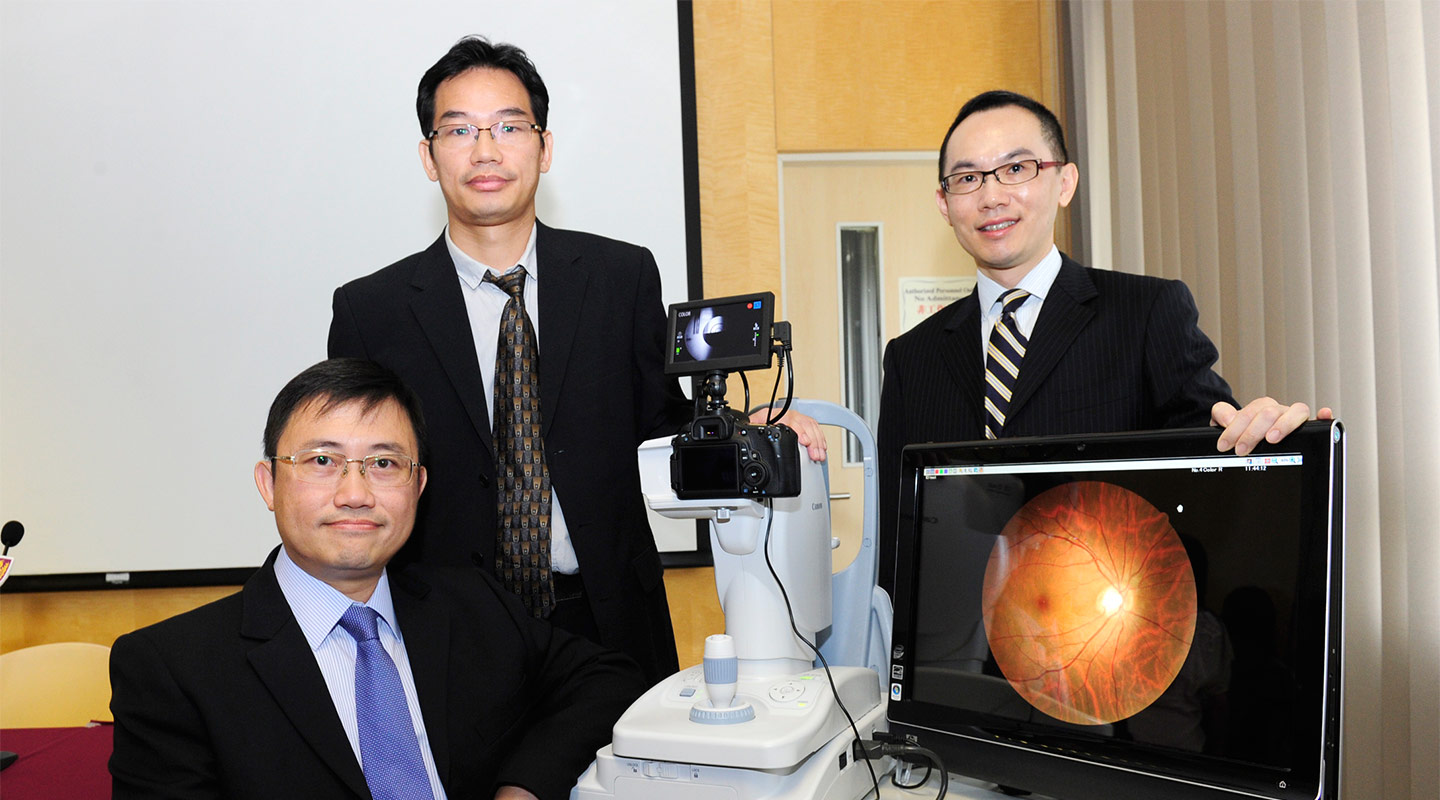Dear readers, With the launch of e-newsletter CUHK in Focus, CUHKUPDates has retired and this site will no longer be updated. To stay abreast of the University’s latest news, please go to https://focus.cuhk.edu.hk. Thank you.
A Clearer Window to Health Hazards

Professor Benny Zee, Associate Director (Graduate Studies) and Professor at the Jockey Club School of Public Health and Primary Care and Head of the Division of Biostatistics, CUHK, has developed an algorithm for an automatic diagnostic system for cerebral vessel conditions and evaluation of the risk of stroke. This grew out of a collaboration with Dr. Jack Lee, a biostatistician with expertise in finance and bioinformatics, and Dr. Qing Li, an ophthalmologist and a PhD student of Professor Zee’s who set out to identify vascular diseases before stroke happens.
Up to 80% of all diabetics of over 10 years would develop diabetic retinopathy (DR) which is damage to the retina caused by diabetes mellitus, with a concomitant higher chance of suffering stroke at a later stage. DR screening has become a standard procedure in diabetic care but its effectiveness is hampered by several factors: not enough specialists to administer the screening, human variability in diagnosis, long waiting time for the result, and high cost.
To address these issues, the team had to find a methodology to turn the analogue images of the retina into quantifiable and analyzable data. According to Professor Zee, the first difficulty encountered in the process was the location of the optic disc (the spot where the light-sensitive ganglion cell axons leave the eye to form the optic nerve to the brain, also known as the physiological blind spot). Although methods of locating it already existed, his team developed a new method that best fit their purpose.
A greater hurdle, however, laid in the detection of new vessels in the eye whose growth is a sure sign of havoc to come. As new blood vessels are short, irregular and squiggly, the determination of their existence and state of growth eluded all existent automatized technology. Applying pattern recognition skills, the team was able to devise an algorithm which reads pixel by pixel the retinal images and analyze such pixels to come up with measurements on exudates, haemorrhages, new vessels and finally achieve the overall evaluation of retinopathy.
Standard retinal images can be transmitted through the Internet to a server installed with the algorithm and the result is available within a short period of time. The new method is non-invasive and will substantially reduce bias due to human perception as well as cost and time. Initial tests have confirmed its dependability and high accuracy rates. Next, Professor Zee intends to expand the technology and apply it to both diabetes and non-diabetes patients for the early detection of strokes.
The eye is the window to the soul, and so is it to sickness. Usually another human eye is required to judge if any hazard is forthcoming—that is the role of the traditional physician. Professor Zee and his team have devised an algorithm that does the job of the expert eye, so that the tool can benefit a wider population of individuals and make bigger impact on health care in general.
This article was originally published in No. 410, Newsletter in Jan 2013.